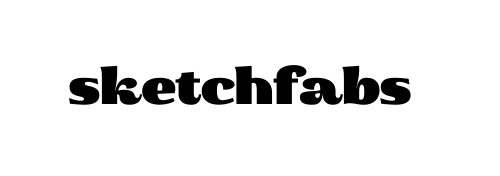3D printing has gained significant attention across industries, from manufacturing to healthcare. However, one area where it’s making waves is in art and design. The ability to create complex, intricate structures using this technology is unlocking new creative possibilities that were previously unimaginable. Artists, designers, and architects are using 3D printing to push boundaries, bringing forth innovations that challenge traditional methods.
As this technology continues to evolve, the future of art and design is bound to change in ways we can only begin to envision. In this blog, we’ll explore how 3D printing is revolutionizing these fields and the potential it holds for the future.
3D Printing – A Brief Overview
3D printing, or additive manufacturing, involves creating three-dimensional objects from a digital file by laying down material in layers. The materials used can range from plastics and metals to more unconventional substances like ceramics or even chocolate. This method allows for detailed and customizable objects that would be difficult or impossible to produce using traditional manufacturing methods.
The technology’s appeal lies in its flexibility and precision, providing designers and artists with the tools to bring their visions to life in ways that go beyond the constraints of traditional crafting techniques.
Revolutionizing Art and Sculpture
Artists are among the early adopters of 3D printing. The precision and range of possibilities offered by 3D printing have led to its incorporation in everything from sculpture to jewelry-making. Traditional sculpting methods, while highly skilled, are often labor-intensive and limit the kinds of forms that can be created.
With 3D printing, artists can achieve levels of detail that would take months by hand, and experiment with complex geometries that would be difficult or impossible to create otherwise. This opens the door to a new era of contemporary art, where the boundary between technology and human creativity blurs.
For example, an artist can design a structure digitally, tweak it to perfection, and have it printed in a matter of hours or days. This could significantly change the way art is produced, enabling greater experimentation and faster prototyping.
The Role of Responsive Design in Digital Art
Responsive design refers to the ability to adapt a digital creation to various display environments, ensuring that artwork, websites, and other visual media look good across devices. In the context of 3D printing, responsive design can be applied to the digital modeling process, allowing artists and designers to modify their 3D designs for different platforms or purposes.
For example, a design created for a sculpture could be adjusted for use in architecture or fashion by simply tweaking its dimensions or material. This adaptability is key in bridging the gap between digital and physical forms, and 3D printing offers an efficient way to bring these designs into the real world.
With software advancements enabling more flexible design modifications, custom software development services are increasingly essential to support this creative process. Specialized software can help in transforming initial digital concepts into 3D-printed realities, making the role of responsive design even more relevant.
3D Printing and Architecture
Architecture is another field heavily influenced by 3D printing. The ability to create scaled models, intricate facades, or even entire structures has revolutionized how architects approach building design. Instead of relying solely on blueprints or hand-built models, architects can use 3D printing to develop more accurate representations of their projects.
Moreover, in large-scale architecture, 3D printing is being used to construct full-sized components of buildings. This cuts down on the time and labor involved in construction, making the process more efficient. Some companies are even working on developing the technology to print entire homes. While this is still in the experimental stage, the potential for cost reduction and increased efficiency in building construction is immense.
Fashion and Design: A New Frontier
3D printing has also made its mark in the world of fashion. Designers are using the technology to create avant-garde garments and accessories that would be difficult to achieve using traditional techniques. For example, intricate lattice patterns, complex textures, and even fully customized clothing can be printed to fit individual measurements.
Designers are not only creating futuristic looks but also incorporating sustainability by using recyclable materials in their 3D-printed creations. This gives rise to a more eco-conscious approach to fashion design, as less material is wasted in the production process compared to conventional manufacturing.
As technology evolves, we can expect to see even more innovative uses of 3D printing in fashion, with custom-made pieces becoming more accessible to the general public.
The Future of Art and Design with 3D Printing
As 3D printing becomes more advanced and affordable, its impact on art and design will continue to grow. The technology’s ability to produce intricate, customizable, and one-of-a-kind creations is perfect for the world of art, which thrives on innovation and originality.
Looking forward, we can anticipate more collaborations between artists, designers, and technologists, bringing fresh perspectives and new tools to the table. Additionally, the possibilities for interactive, immersive art installations using 3D printing technology are endless. Artists will no longer be confined by material limitations, allowing them to focus solely on creativity.
Architects will continue to benefit from 3D printing’s ability to create sustainable, affordable building components. Fashion designers will push the boundaries of style and functionality, while also reducing waste in the process. In short, 3D printing is more than just a trend; it’s a transformative technology that will shape the future of creative industries.
Wrapping Up
3D printing is revolutionizing how artists and designers work, offering new levels of creativity, customization, and sustainability. From democratizing access to art and design tools to enhancing personalization in everything from sculptures to jewelry, the impact of 3D printing is undeniable.
As this technology continues to advance, we can expect even more exciting developments that will shape the future of both industries. And just like responsive design role in writing emphasizes adaptability, 3D printing’s role in art and design will continue to evolve in fascinating ways.
Social Media Posts:
- “How is 3D printing changing the way we create art and design? Discover the future of creativity and innovation with this game-changing technology! #3DPrinting #ArtTech”
- “Customization and sustainability meet creativity! Find out how 3D printing is shaping the future of art and design in our latest blog. #DesignInnovation #3DPrinting”
- “The future of art and design is here, and it’s 3D-printed! Explore how this technology is breaking barriers and transforming the creative process. #ArtAndTech #3DRevolution”

